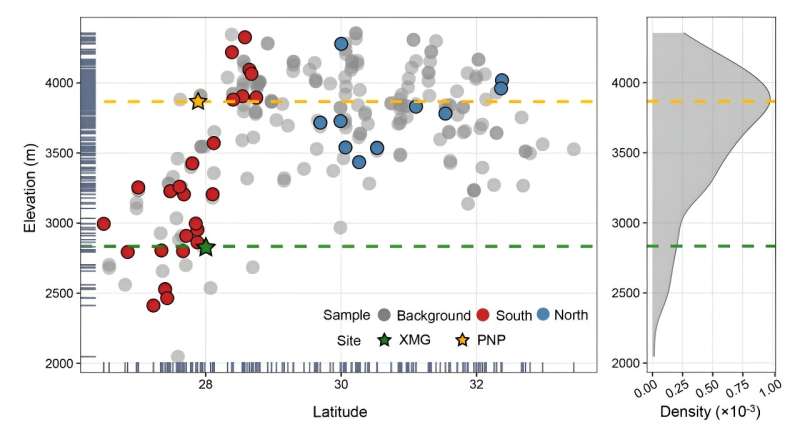This article has been reviewed according to Science X's editorial process and policies. Editors have highlighted the following attributes while ensuring the content's credibility:
fact-checked
trusted source
proofread
Study shows endemic plants adapt to high altitude by adjusting phenotypic traits

Located in southwest China, the Hengduan Mountains (HDM) are one of the world's biodiversity hotspots, characterized by diverse topography and exceptionally high mountain biodiversity. Rorippa elata (Brassicaceae) is an endemic herb in the area of HDM and represents an ideal material for studying alpine adaptation.
In a study published in the Journal of Plant Ecology, researchers from the Xishuangbanna Tropical Botanical Garden (XTBG) of the Chinese Academy of Sciences discussed how the alpine plant Rorippa elata adjusted its phenotypic traits to adapt to environmental changes at different altitudes.
Through common garden experiments, the researchers revealed the types and phenotypic basis of its adaptive strategies and assessed the contribution of different effects to its phenotypic variation.
Between 2021 and 2022, they sampled 37 genotypes from representative populations in the HDM at different altitudes (2,800m vs. 3,800m) and measured nine adaptively related phenotypes, including flowering rate and mustard oil glucoside content.
Using statistical methods such as mixed linear models, they evaluated the contributions of environment or genotype to the phenotypic variation in Rorippa elata and identified the main environmental factors affecting adaptability.
The results showed that the phenotypic variation of Rorippa elata was jointly influenced by environmental effects and genotype-environment interaction effects. Latitudinal heterogeneity was identified as a key environmental variable, explaining 32% of the adaptive phenotypic variation. Rorippa elata adapts to high altitude by adjusting its phenotypic traits. These traits may include growth rate, leaf size, photosynthetic efficiency, etc.
Genotypes from the northern part of the Hengduan Mountains showed higher plasticity in morphological phenotypes such as flowering rate, while genotypes from different altitudes within the southern part of the Hengduan Mountains showed significant local adaptability in metabolic phenotypes such as mustard oil glucoside content.
"Our study will provide a framework for understanding the adaptive strategy of alpine plants and promoting the conservation of mountain biodiversity," said Xing Yaowu of XTBG.
More information: Zhi-Qiang Du et al, Effects of environment and genotype-by-environment interaction on phenotype of Rorippa elata (Brassicaceae), an endemic alpine plant in the Hengduan mountains, Journal of Plant Ecology (2024). DOI: 10.1093/jpe/rtae048
Provided by Chinese Academy of Sciences





















